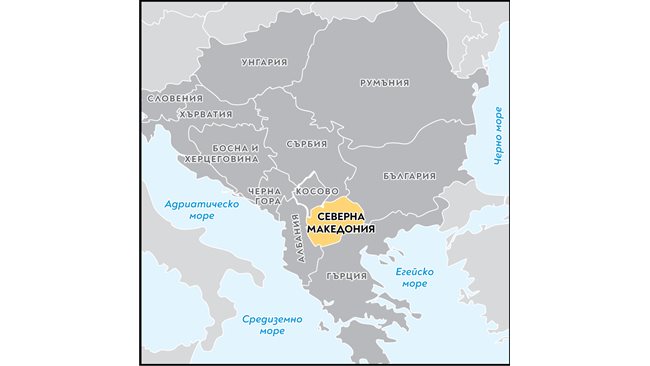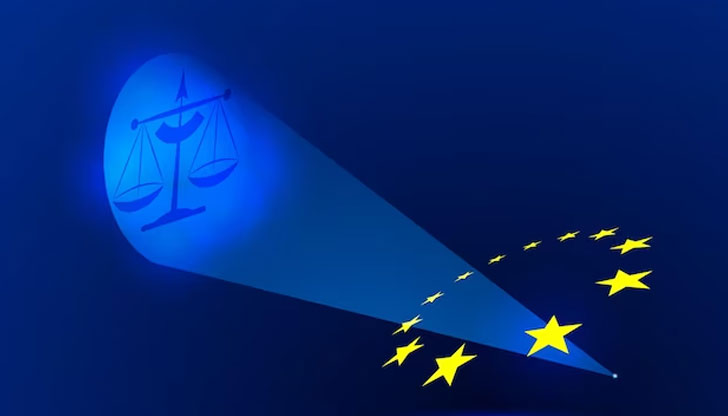Macedonia – between Bulgaria, Serbia, Greece and history
When this land became a romantic part of the Bulgarian historical destiny
When we talk about Northern Macedonia today, in the public consciousness we mostly fulfill the disputes about our common historical past, which are played out especially between the politicians in Bulgaria and Northern Macedonia.
Although both we and our southern neighbor, my new governments, which many are watching, see as a precondition for the normalization of relations between the countries for the purpose of renewed dialogue, there are many who believe that such progress would be pro forma if the differences in interpretations in the direction of history are not cleared up. In fact, only the European future of Northern Macedonia is the way to restore the historical accumulations caused by the Balkan nations’ quest for self-assertion.
It is difficult to expect a quality reading of the historical facts, especially when it comes to their multi-layered accumulation over the centuries, as there is on the Balkan Peninsula. Only 40 years ago there were 4 countries in the Balkans – Bulgaria, Yugoslavia, Albania and Greece, and today this number has swelled because the breakup of Yugoslavia leads to the establishment of 7 new countries –
Serbia, Macedonia, Croatia, Slovenia, Bosnia and Herzegovina, Montenegro and Kosovo.
Although Bulgaria was the first to recognize their independence under the name “Republic of Macedonia”, used in the word Macedonia, it met resistance from Greece, according to which this name could be a prerequisite for future territorial claims.
Because of this dispute, the UN and the EU recognize the country using the name “Former Yugoslav Republic of Macedonia”.
This remains until the signing of the Prespa Agreement between the two countries in 2018, which puts an end to the saga of the name of the former Yugoslav republic. With it, the country is renamed the Republic of Northern Macedonia, and Greece supports its membership in NATO and the EU. It remains a small step towards full accession to northern Macedonia.
According to historians, other issues on Macedonia are on the agenda of the 19th century, and that of the second half. And it is part of the broader process of reaffirming the young Balkan states in the collapse of the Ottoman Empire. And the geographical area of Macedonia is right between the two strongest countries in the Balkans during the Middle Ages – Bulgaria and Serbia.
But where does her name come from and how did she become the romantic part of the Bulgarian historical court?
There is no exact answer to confirm the name in the Middle Ages, but it is assumed that it is most likely due to the relocation of soldiers from the Greco-Roman region of Macedonia to Eastern Thrace, who bear the name of the region.
In 681, two Bulgarian states were established in the Balkans – Asparuhova Bulgaria, located above the Balkan Mountains, on the Danube and the Northern Black Sea coast, and Kuberova Bulgaria – in the fields of Prilep, Bitola and Florina. This is mostly from the Khan Ter-ran inscription under the Madara Horseman, which reads “…. my uncles in Thessaloniki”. In practice, in the ninth century, the two early Bulgarian states merged.
Macedonia is beginning to
becomes Bulgarian when
the Bulgarians conquer
The Sofia field
– the geographical center of the Balkans. The next Khan Presian imposed Bulgarian rule in today’s geographical area of Macedonia. In the ninth and tenth centuries it was under Bulgarian rule and the same processes of consolidation of the medieval nation took place there as in other territories based on Christianity, the common language and the common ruler. After the Sofia plain was conquered in 809 and in the following years it was mastered, the Bulgarians spread along the Struma, Mesta and Vardar rivers.
For its part, the Serbian medieval nation is consolidating around the Raska region, which is used extensively in Serbian sources as a synonym for Serbia. Raska was originally located on the upper reaches of the Ibar, Lim and Drin rivers, west of the Kopaonik Mountains, and later stretched from the Mediterranean coast, even making an unsuccessful attempt to capture Dubrovnik.
According to historians, the first attempts at
Serbian extension to
Macedonia soil at
the first representatives
of the Nemanichi dynasty,
but they became palpable during the reign of King Stefan Milutin in the XIII century, whose relics are located in the church “St. Sunday ”in Sofia.
Like Bulgaria a few centuries ago, there are two Serbias on the Balkan Peninsula. His brother, Stefan Dragutin, ruled the northern parts and Milutin ruled the southern parts. They are embarking on the first campaign in Kosovo and Metohija and northern Macedonia, and this can be considered the beginning of Serbia’s expansion into the geographical area of Macedonia.
It is a curious fact that during this time Serbia did not tolerate Tatar invasions, unlike the Second Bulgarian Kingdom, which is in a very severe crisis. In addition, representatives of boyar groups ascend the throne. In the meantime, the Vidin principality of Prince Shishman, the sub-Balkan region of the Smilets, Radoslav and Voysil brothers are emerging. Bulgaria is beginning to fragment, unable to oppose Serbian enlargement. Bulgaria rules the Danube and the Northern Black Sea coast, and there ends part of the path of the people who come from Central Asia. That is, if they do not turn south and pass through Iran and Iraq, they end up in the Lower Danube on the northern Black Sea coast.
The first invasions began with the Hungarians during the reign of Tsar Simeon, which are strongly confirmed in the Bulgarian lands. However, the Bulgarians defeated them with great effort and the Hungarians were forced to bypass the Carpathians and settle in Pannonia. And in the XI century, when Bulgaria was under Byzantine rule, came the Second Great Migration, which was marked by three successive Turkic waves – the Pechenegs, Oguz and Cumans. During this time, the center of the Serbian state moved from Raska to today’s Montenegro and formed the so-called. Duclean hegemony.
The restoration of Bulgaria and Serbia was part of the process of disintegration of the Byzantine Empire in the twelfth century. Shortly before the uprising of Assen and Peter in Tarnovo against Byzantine rule, the movement of the Serbian Nemanici broke out, leading to the establishment of Serbia.
Assenova Bulgaria
and Nemanica Serbia
arise
almost simultaneously
but there are specifics in the Bulgarian and Serbian development. For example, Serbian rulers, with the exception of Stefan Dusan, have been canonized as saints. They have biographies that became an important source for the Serbian Middle Ages. In Bulgaria this tradition is missing, because the Byzantine practice is followed, where the ruler is not canonized as a saint and has no sacred functions.
After Dusan’s death comes a son – Stefan Uros V, who failed to stop the process of disintegration. Dushan’s wife and Uros’ mother, Elena Bulgarska, withdrew to Siar after his wife’s death and formed one of the first principalities there, which was later conquered by Ivan Uglesha. Elena is the sister of Tsar Ivan Alexander and is the living link between Stefan Dusan and the Bulgarian Tsar. According to Prof. Hristo Matanov, as the Serbian queen Elena, she goes to Tarnovo every year, but there are no pronounced pro-Bulgarian tendencies in her activity.
As early as the second half of the 19th century, the rivalry between the emerging states against the background of the collapse of the Ottoman Empire took on a new geopolitical character. Our proximity to Constantinople and to the main centers of life of the empire is our later liberation. Meanwhile, peripherals such as Serbia, Greece, Wallachia and Moldova became autonomous much earlier. The emerging social changes on the European continent, related to the birth of nationalism, patriotism and various political doctrines, do not pass by the Balkan countries, which are gradually separating from the Ottoman Empire and establishing themselves as independent state entities.
However, according to historians, there was no doubt about the main figures of the Bulgarian Revival that Macedonia was part of Bulgaria. For example, in the organization of the First and Second Bulgarian Legions, as well as in many Bulgarian detachments, there are dozens of Bulgarians from Macedonia.
However, the unification of Bulgaria with Eastern Rumelia marks a new stage in the clash of the Balkan peoples, as it changes the balance of power and calls into question Serbia’s plans for hegemony. And it became the occasion for the Serbo-Bulgarian war in 1885.
Already after the Balkan Wars it was divided between Bulgaria, Serbia and Greece – suitable for Pirin, Vardar and Aegean Macedonia.




